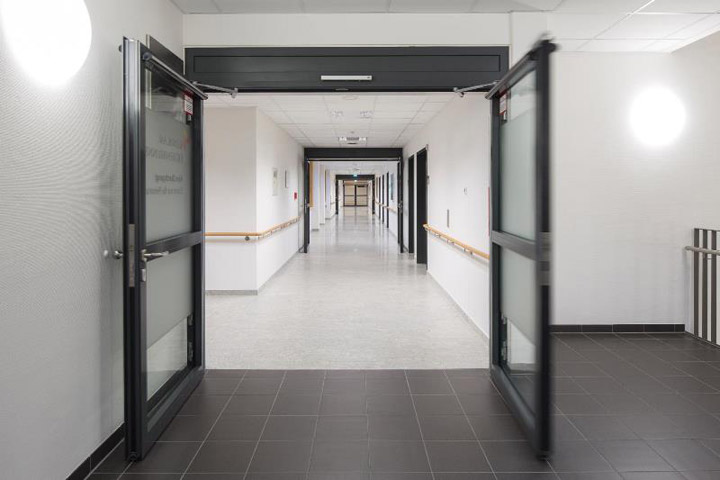Construction of automatic doors
Through automated technology, automatic doors open or close to permit access in or out of a space.
The essential components that enable complete automation are the sensor and the operator.
The sensor recognises various elements, such as sound, light, and weight, with commercial automatic doors utilising optical or motion sensors. Once it senses movement nearby, the sensor activates and sends a signal to the operator to open the automatic doors. The operator initiates an electric motor, causing the doors to open, while a set timer signals when to close them again.
Enhancing Modern Facilities
It’s almost inconceivable for modern facilities to operate without automatic doors. From supermarkets, banks, hospitals, and schools to shopping malls and airports, automatic doors are expected to facilitate entry and exit, significantly contributing to increased foot traffic. People feel welcomed, and wide-open doors provide a pleasant greeting.
Advancements in Access Control
With technological advancements, the applications of automatic doors have expanded. Nowadays, we can generate reports on flow by connecting with the central building maintenance system, granting access only to authorised individuals, or registering employees when they arrive or leave work.
Access control is attainable using a remote control, key card, smartphone, motion sensor, control unit, touchless button, or any other device programmed with the access control system.
Types of automatic doors
- Sliding automatic doors – widely used and suitable for bidirectional traffic, the operator mechanism is installed above the door opening.
- Swinging automatic doors – ideal for one-way traffic, the operator is compatible with standard doors that turn inward or outward; the operator is mounted on the door leaf or frame.
- Revolving or circular automatic doors are optimal for high-traffic areas, allowing simultaneous entry and exit and offering the highest energy efficiency.








